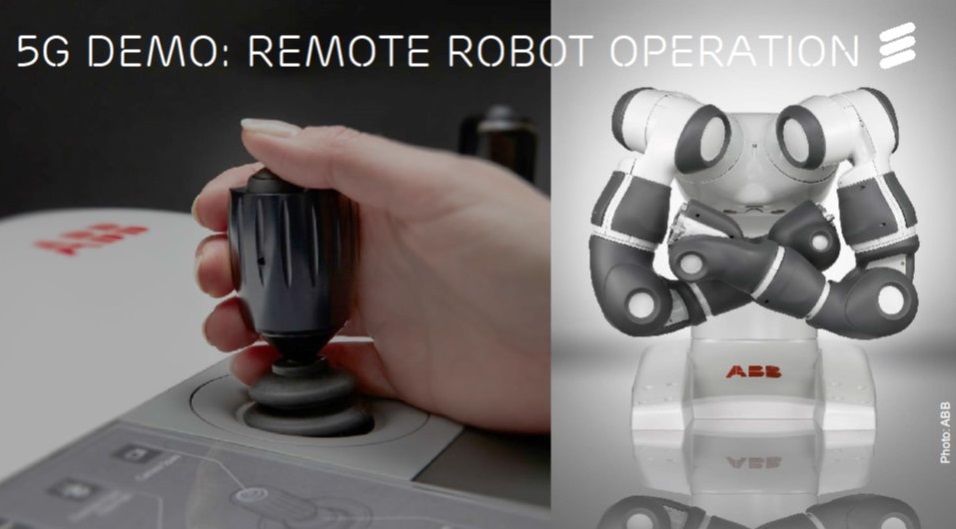As its name suggests, 5G represents the fifth generation of cellular network technology. Since mobile phones first appeared in the 1980s, each successive generation of technology development has brought with it improvements in network speeds and performance and allowed the basic phone call function (1G) to be enhanced by features such as text messaging (2G), internet access (3G), and high quality video streaming (4G).
Indeed, it’s commonly acknowledged that making calls is but a minor part of the proposition of today’s ubiquitous smartphones – take a look at your own phone bill to see how broadband internet access has supplanted voice calls as telecom companies’ main revenue earner.
I explored in a
previous blog post how the telcos are now looking towards to the Internet of Things as the next driver of data traffic growth, and how network equipment suppliers such as Ericsson and others are developing technologies to meet the emerging standards, notably NB-IoT and LTE-M, for efficiently connecting things rather than people on cellular networks. The ramp-up in speed and performance that goes with the next evolution of the cellular story, 5G, brings with it increased relevance to the industrial flavor of IoT, i.e. IIoT, and some interesting potential applications.
It should be stated that no formal specification of 5G exists as yet, let alone any commercial infrastructure. However, this has not stopped equipment providers from progressing technology development and partnering with telcos on early field trials.
For example, at
Mobile World Congress 2016, the major tradeshow for the industry held annually in Barcelona, Ericsson and Verizon revealed results from trials involving Ericsson’s 5G Radio Prototypes, which saw the realization of 25 Gbps download speeds. And Nokia exhibited its AirScale base station technology, which provides speeds of 20 Gbps, and also announced a tie-up with T-Mobile to test its 5G technology in the US this year.
The first
planned service use of 5G is by Korean mobile operator KT for the Winter Olympics in Pyeongchang in 2018, and global commercial roll-out of 5G is expected by 2020. Opinions differ on exactly how fast 5G will be but it is quite likely that we’ll see speeds at least 50 times faster than today’s 4G LTE networks i.e. in the order of tens of gigabits per second compared to 4G’s tens of megabits.
Once the cellular world starts being framed in terms of Gbs rather than Mbs, it equates to a whole new experience for mobile users; Huawei gives the example of an 8 GB HD movie downloadable in six seconds versus seven minutes over 4G and at least an hour on 3G. But it also makes cellular an attractive proposition for IoT applications such as those involving autonomous vehicles, which require fast connections to and from the cloud for rapid decision making, or very large, smart-city type sensor roll-outs, which need high capacity networks.
More specific to Industrial IoT, 5G’s extremely low latency of one millisecond (versus about 25 ms for 4G) makes it viable for critical industrial applications involving control rather than just monitoring. At Mobile World Congress 2016, Ericsson showed an example of this: remote joystick control of an ABB robot located in Sweden directly from the exhibition floor in Barcelona, enabled by prototype 5G technology. As Raymond Soh VP, Engagement Practices, Ericsson Singapore & Brunei, explained at a recent analyst briefing, with haptic feedback capability, when the robot arm moved in Sweden you could feel it as if it was your own arm.

Remotely controlled operations are particularly applicable in industries like mining, construction, oil & gas, and power, where the operating environment may be hazardous and the sites distantly located, hard to reach, and inhospitable. For a remote worker to operate a machine in a mine, for example, as safely and efficiently an on-site operator necessitates a level of sensory awareness of the surroundings and this becomes possible with a fast, low latency 5G network transmitting live video and enabling real-time force feedback and haptic interaction.
Boosting the case for 5G-enabled remote operations further is the geographically distant and sometimes temporary nature of many of these industrial operations, which lends itself to cellular enabled connectivity, rather than Wi-Fi or fixed line that both require investment in on-site infrastructure.
As 5G standardization efforts, technology developments and field trials progress over the next two or three years, the applicability and value proposition of this latest evolution of cellular technology for IIoT will become clearer and more use cases will arise. It’s certainly an exciting area to watch so look out for announcements from the major telco operators as well as 5G technology suppliers like Alcatel-Lucent, Ericsson, Huawei, and Nokia.




